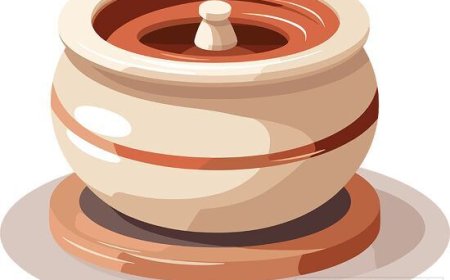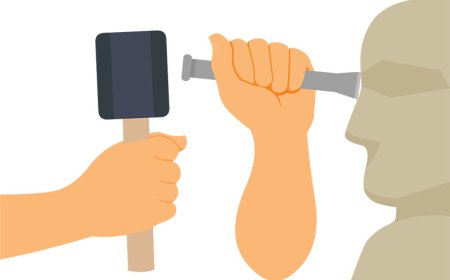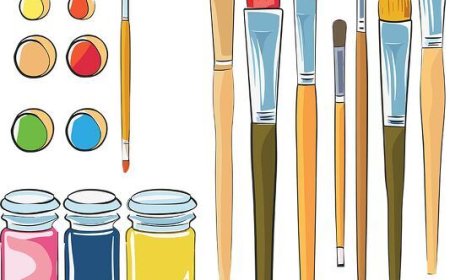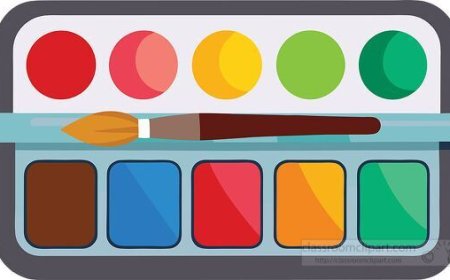Printmaking for Students – History, Types, and How to Make Prints
Learn about printmaking, one of the oldest art forms in the world. Explore how artists create prints using carving, inking, and pressing techniques.
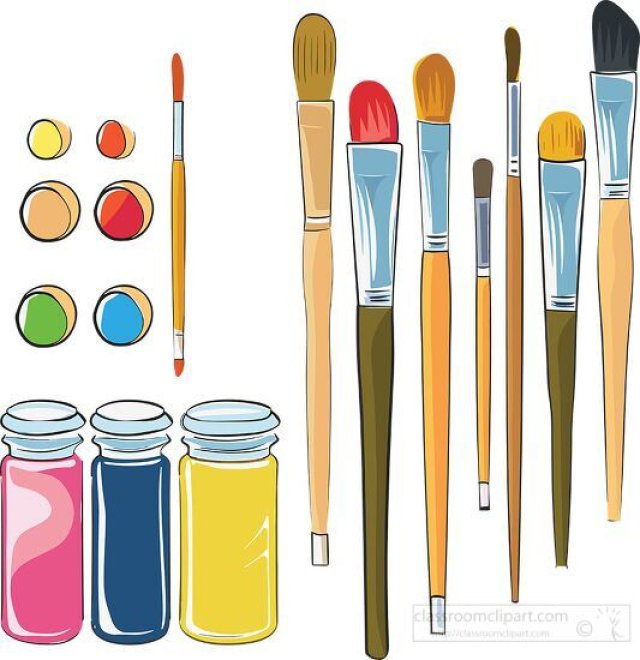
🖨️ Printmaking: Creating Art One Print at a Time
🎨 Introduction
Printmaking is a creative and exciting way to make multiple copies of the same image. Unlike painting or drawing, which usually create only one original, printmaking allows artists to reproduce their artwork many times with ink and a printing surface. Each print is considered an original work of art—not a copy—because it’s hand-made, often slightly different from the others.
From ancient carvings to modern screen prints on posters and T-shirts, printmaking has been used by artists across cultures and centuries. In this article, you’ll learn how printmaking works, what materials are used, the different types of printing techniques, and how you can make your own prints at home or in the classroom.
🖨️ What Is Printmaking?
Printmaking is the process of transferring an image from one surface to another, usually by applying ink to a prepared surface (called a matrix) and pressing it onto paper, fabric, or another material.
The basic steps include:
- Creating an image on a surface such as wood, linoleum, metal, or screen.
- Applying ink to that surface using a roller or brush.
- Pressing the inked surface onto paper or fabric to make a print.
Each time you press the inked surface, you create a new print. A group of identical prints is called an edition, and each one is usually numbered and signed by the artist.
🖌️ A Brief History of Printmaking
Printmaking has been around for over 2,000 years. It began in China, where people used woodblocks to print patterns and text onto cloth and paper as early as 200 CE. By the 9th century, the Chinese had developed woodblock printing for books and scrolls.
In Japan, printmaking became a major art form. Artists like Katsushika Hokusai created beautiful prints of nature and city life using woodblocks, known as ukiyo-e.
In Europe, printmaking became important during the 15th century when artists like Albrecht Dürer used engraved metal plates to make detailed prints. With the invention of the printing press by Johannes Gutenberg, books and images could be shared widely, helping spread knowledge during the Renaissance.
Today, printmaking is used in both fine art and commercial design—from hand-printed posters to printed fabrics and greeting cards.
🧱 Types of Printmaking
There are four main types of traditional printmaking. Each one uses a different technique and surface:
1. Relief Printing
In relief printing, the artist cuts away parts of a surface (like wood or linoleum), leaving the raised image to hold the ink. When the inked surface is pressed onto paper, the raised parts transfer the ink, and the cut-away areas stay white.
Common types:
- Woodcut – Carved from wood
- Linocut – Carved from linoleum (easier for beginners)
2. Intaglio Printing
In this method, the image is scratched or etched into a metal plate. Ink is rubbed into the grooves, and the surface is wiped clean. The plate is then pressed with damp paper using a printing press.
Examples:
- Etching
- Engraving
- Drypoint
These methods require more advanced tools but can produce incredibly detailed prints.
3. Lithography
This technique uses a flat surface (usually stone or metal) and works on the principle that oil and water don’t mix. The artist draws with a greasy material, then treats the surface with water and oil-based ink. The ink sticks to the drawing but not to the rest of the surface.
Lithography is often used in posters and commercial printing.
4. Screen Printing (Silkscreen)
A mesh screen is used to push ink through onto paper or fabric. Areas of the screen are blocked so only certain parts let ink through.
Common uses:
- T-shirt designs
- Posters
- Art prints
Screen printing is popular for both fine art and everyday items. It can be done at home or in a studio.
🧰 Tools and Materials Used in Printmaking
Each type of printmaking uses different tools, but here are some common ones you might encounter:
- Brayer (roller) – Used to roll ink onto the surface
- Block or plate – The surface that holds the design (wood, lino, metal)
- Carving tools – For cutting into blocks (used in relief printing)
- Ink – Special printmaking ink, thicker than paint
- Paper – Often thicker or dampened to accept ink well
- Baren or press – Used to apply even pressure during printing
- Screen and squeegee – Used in screen printing to spread ink
Beginners often start with linocut kits or foam plates, which are safe and easy to use.
👩🎨 Famous Printmakers
Throughout history, many artists have made a name for themselves through printmaking:
- Albrecht Dürer (Germany) – Known for detailed woodcuts and engravings during the Renaissance.
- Hokusai (Japan) – Famous for The Great Wave off Kanagawa, a woodblock print.
- Rembrandt van Rijn (Netherlands) – Used etching to create emotional portraits.
- Andy Warhol (USA) – Used screen printing to create colorful pop art like Marilyn Monroe prints.
- Kara Walker (USA) – Contemporary artist who explores history and race using cut-paper and printmaking techniques.
These artists used prints to explore culture, identity, and beauty in ways that paintings alone couldn’t.
🧬 Printmaking in Art Education
Printmaking teaches students to think in reverse, plan in layers, and explore texture, contrast, and repetition. It supports the National Core Arts Standards by encouraging students to:
- Create – Design and print original artwork using hands-on processes
- Present – Select and display prints in portfolios or exhibitions
- Respond – Reflect on their own and others’ work
- Connect – Explore the history and cultural use of prints
Printmaking builds patience, planning, creativity, and problem-solving—skills that help in art and beyond.
✂️ Simple Printmaking Project: Foam Block Print
Here’s an easy classroom or at-home project to try:
Materials:
- Styrofoam tray or foam sheet
- Pencil
- Washable printing ink or paint
- Brayer (or small roller/paintbrush)
- Paper
Steps:
- Draw your design into the foam using a pencil (don’t press too hard).
- Roll ink onto the foam using a brayer or brush.
- Press the foam onto paper and rub gently.
- Lift the foam to see your print!
- Repeat to make an edition of prints—try different colors and papers.
This project helps beginners understand how printmaking works and encourages creative experimentation.
🧠 Vocabulary Words
| Word | Definition |
|---|---|
| Printmaking | The art of making multiple original prints using ink and a matrix |
| Relief | A method where the raised surface prints, and the carved parts do not |
| Matrix | The surface that holds the design (wood, lino, metal, etc.) |
| Brayer | A roller used to apply ink evenly |
| Etching | Using acid to cut lines into metal plates |
| Screen printing | Using a mesh screen to press ink through a stencil |
| Edition | A set of prints made from the same design or block |
🌟 Interesting Facts About Printmaking
- The oldest woodblock print is from China, made around 868 CE.
- Some prints are made in reverse, so they look correct when transferred.
- Pop artist Andy Warhol made hundreds of prints with just a few screens.
- Japanese printmakers would use up to 30 separate blocks for one full-color image.
- Many famous books and illustrations were made using engraved metal plates before printing was digital.
📘 Key Takeaways
- Printmaking is a powerful way to create and share artwork using ink, surfaces, and pressure.
- There are four main types: relief, intaglio, lithography, and screen printing.
- Artists throughout history have used printmaking to tell stories, make art accessible, and explore new ideas.
- Printmaking is fun, educational, and perfect for both traditional and modern classrooms.
- You can start printmaking with simple tools like foam, ink, and paper
🎯 Interactive Quiz
1. What is printmaking?
A) Painting with sponges
B) Drawing with pencils
C) Creating images by transferring ink from a surface to paper ✅
D) Mixing colors on a canvas
2. What is a “relief” print?
A) A photo print
B) A print using raised surfaces to hold ink ✅
C) A print made from a camera
D) A type of digital painting
3. What tool rolls ink onto a printing surface?
A) Sponge
B) Squeegee
C) Brayer ✅
D) Chisel
4. Which artist is famous for The Great Wave woodblock print?
A) Rembrandt
B) Hokusai ✅
C) Dürer
D) Warhol
5. What type of printmaking uses a mesh screen and squeegee?
A) Intaglio
B) Lithography
C) Screen printing ✅
D) Engraving


















































